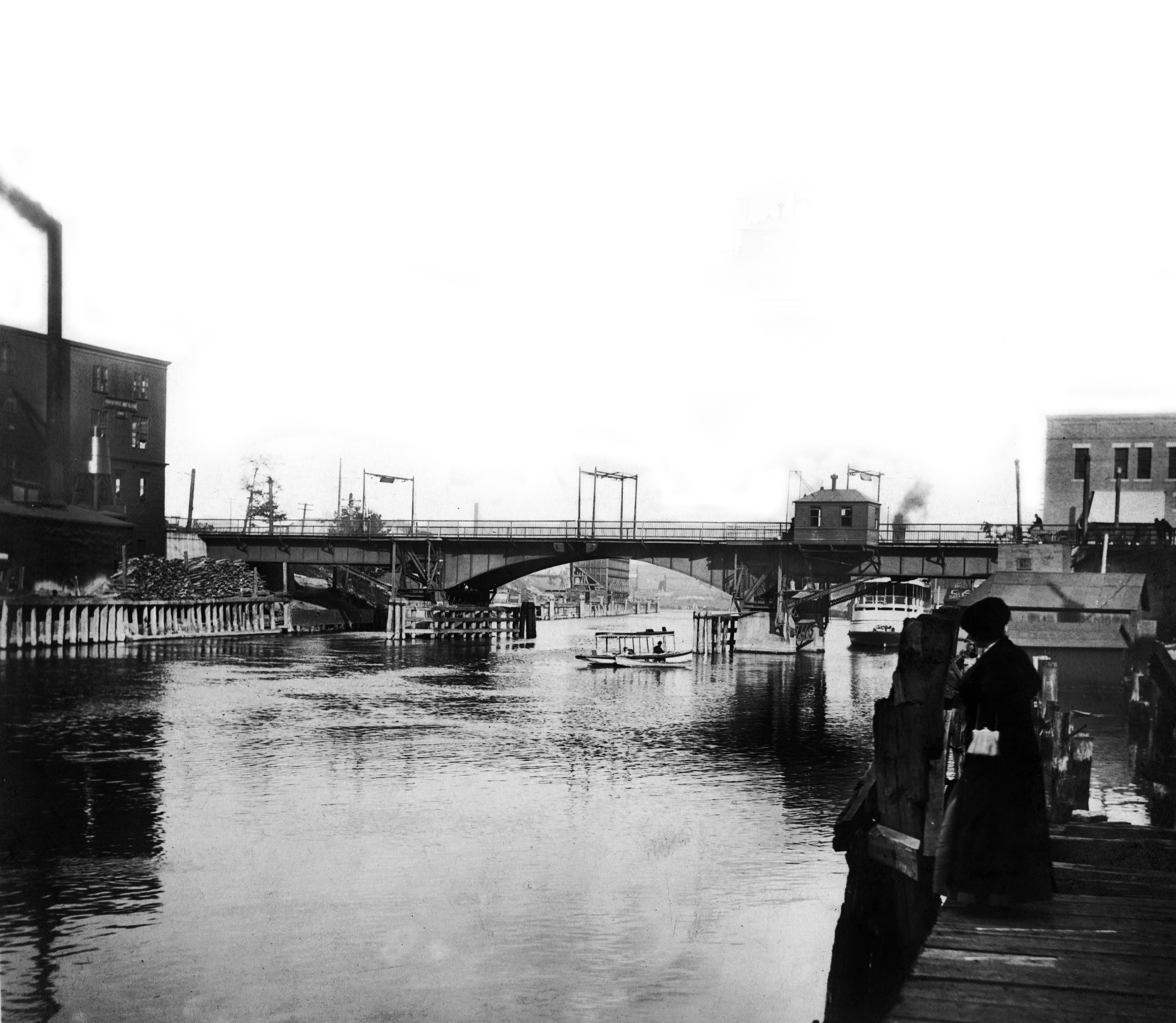
Prior to the late 1860s, there was no easy access across the Manistee river channel. This meant that the town was actually made up of two areas and two communities, those that resided North of the city limits and those that resided South of the city. The only way to really get to the other side of either channel was to ferry across by canoe or small boat.
The post Civil War years were a time of growth in Manistee as many lumber mills began to pop up around Manistee Lake which lead to a large surge of people. Due to this population boom, it was suggested that a bridge be constructed on Maple Street to connect both parts of town. While early local government officials made the decision that the construction of a bridge was beyond their means, a group of local businessmen organized the Manistee Bridge Company for the goal of building and operating a bridge across the river.
The building of a swing bridge commenced in 1866 and was made of wood with a center pivot placed into the river so schooners could navigate the waters.
After the bridge was completed it was decided by stockholders of the Manistee Bridge Company that, as a way to recover their investment of $6,000, those crossing the bridge would have to have pay a toll of 5 cents for each person and 10 cents for teams. This was especially difficult because records show that common mill laborers were only paid eight cents an hour.

After some time many local citizens resented the fact that they would have to pay a toll and locals began to campaign in the local newspapers for a free bridge. The decision on the bridge was made by circumstance on October 8, 1871 when the Great Fire destroyed two thirds of the town, including the bridge.
The following year the County Board of Supervisors purchased the real estate of the Manistee Bridge Company and began to make studies and draw up plans for a new iron bridge across the Manistee River. As a way to get across the river it is believed that pontoon-like ferries were used in the winter time while ferries were used in the shipping seasons.
After a failed attempt asking county voters for money, the Manistee City Council decided to take over the bridge and sell the bonds which in turn meant that they would construct a new bridge as well as operate and maintain it. Over the next year a new iron bridge was ordered and installed by a firm out of Canton, Ohio.
Finally in May of 1873 the new iron bridge, with a swing portion of 160 feet long and span between piers of 46 feet, was opened with the entire cost at nearly $18,000. The bridge had to be manually turned by a crank to provide the effort required to rotate the bridge for opening.
Nearly three decades later the iron bridge was deemed to be unsafe and demanded either major reconstruction or a replacement bridge. In 1905 the City Council advertised for bids for the construction and installation of a new steel overpass to serve the city. The City made the decision to go with a double leaf electric bascule bridge with the cost of roughly $34,000.
Five decades later, a study discovered that the abutments of the bridge were collapsing with plans eventually drawn up for the construction of another structure. In 1962 a new Maple Street Bridge was constructed and continues to be in use today.
To learn more about the history of Manistee County visit the Manistee County Historical Museum.


Recent Comments